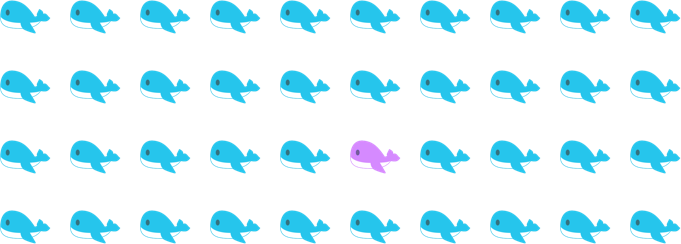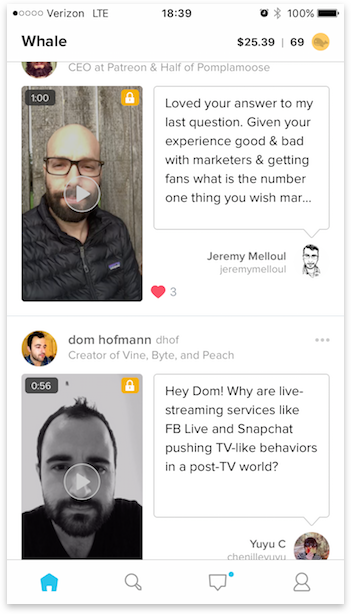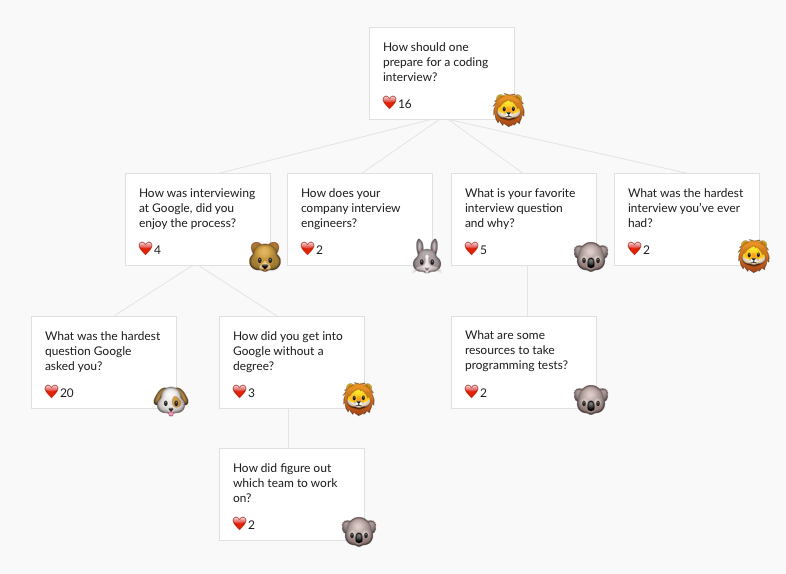Whale’s Potential

I’ve been a pretty active and enthusiastic user of Whale, a new product that was released only a week ago. It’s a fun app made by a strong team and people seem to really enjoy it, but I see something deeper and game-changing lurking under the surface.
What is Whale?
The premise is simple: You can ask anyone a question and get an answer. The concept is similar to products like Jelly and the late Aardvark. However, Whale’s primary differentiators are two things:
- The medium is video and text. Questions are text, while answers are videos up to 1 minute long. It works well because the feed is quick to browse and the videos are short and fun to watch.
- Users get paid. Anyone may charge a fee to be asked a question, paid by the person asking the question. If answered within 48 hours, the money is almost entirely passed on to the answerer. The net effect is higher quality content and less noise, which is something other Q&A product suffered from in the past.
The intersection of those two differentiators, some key constraints, and solid execution on the MVP product has made for a unique offering that I’m bullish on.

A whale of an opportunity
While there are plenty of enhancements that Whale can (and will) make in the near future, there are two simple changes that can unlock the opportunity to change the way we learn and share knowledge.
- Dupe a question. If you’re asked the same question that you’ve previously answered, you should be able to link and point to your previous answer to that question.
- Follow-up questions. If you’ve just watched an answer, and want to that person to clarify something or go further in depth, you should be able to ask a follow-on. The effect is a link that creates a parent-child relationship between the two questions. (Look no further than the question asked of Jack Conte in the screenshot above to see the need).
The links form a graph of knowledge from a single domain expert, curated by their audience. This fundamental change is an elegant solution to the fact that it’s difficult to go into detail in only one minute of video, hinging on the hypothesis that people love details and will pay for them.
This net result grants the audience the ability to go in-depth on a topic for everyone’s benefit. Here’s a visualization of the model.

A seemingly innocuous question, “How do you prepare for a coding interview?” turned into a tree of information that was shaped almost entirely by the answerer’s audience, leading to richer content. Still, every individual answer can stand on its own in the feed, but it creates a traversable graph for viewers to go broader or deeper on the topic. That’s so awesome and extremely efficient.
I enjoyed many of Mark Suster’s snapstorms about startups, but the content was very linear and non-interactive. While that model works (e.g., Khan Academy), after experiencing Whale, I realized how the option to directly ask a clarifying question can take it to the next level.
You might be thinking that this concept already exists in the wild (e.g., forums, AMA’s, Twitter); but the primary differences are the two things I already mentioned:
- The medium (video) is uniquely personal
- You can make money and build your brand
Cool, what else?
Here are some other things I felt could be interesting:
- Retweet (rewhale?). This just makes sense because sharing knowledge is cool.
- Search! Questions are in text, you should be able to search them. Additionally, consider adding #hashtag support in lieu of explicit tags or categories.
- Upvote (i.e., pile-on money) for pending questions. If a particularly great question is asked, but hasn’t been answered, the option to upvote or pay additional for the question to be answered might be useful. The risk is that it leads toward an auction-like system, which might be confusing or overly complicated at this point.
- Periscope-style likes. This gives the answerer a good sense of what resonated with their audience. This has drawbacks, so should be carefully considered.
- No comments. Comments would partially cannibalize content in its primary medium: video. That said, the ability to explain why I refused an answer would be good.
In product development, timing is everything and you need to know when to go broad (launch new features) versus go deep (polish and refine the existing ones). The important thing right now is for the team to learn about their users, keep what’s working, address what’s not, and iterate. I can’t wait to see where they take it.

Thanks for reading and you should follow me on Twitter http://twitter.com/davidbyttow 👊🏻
